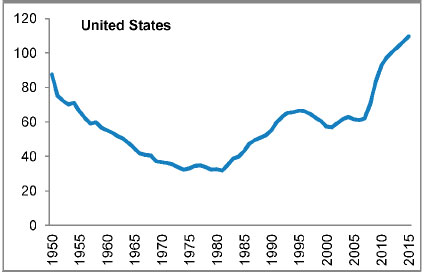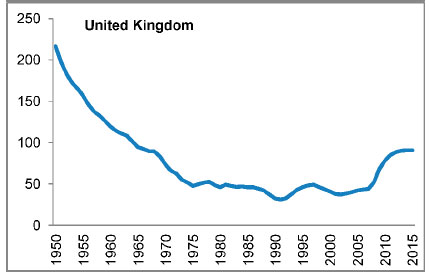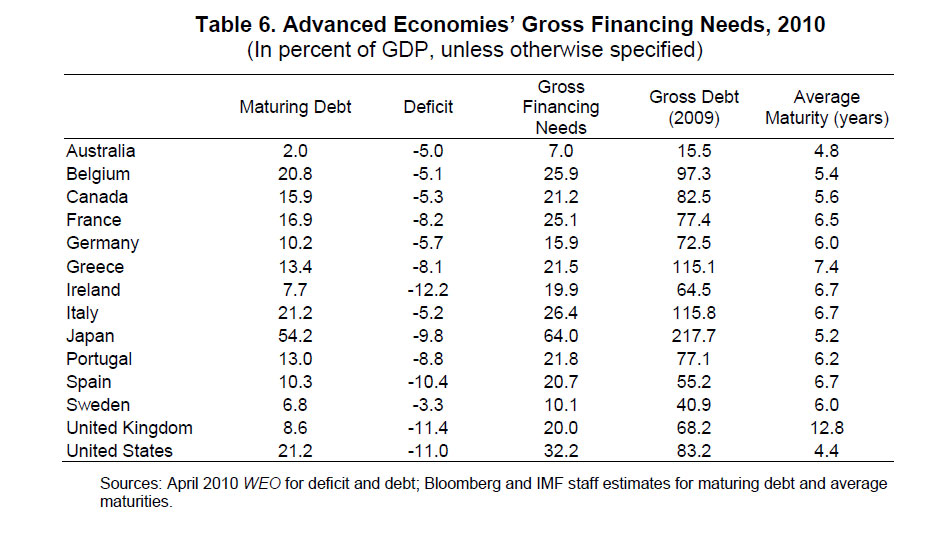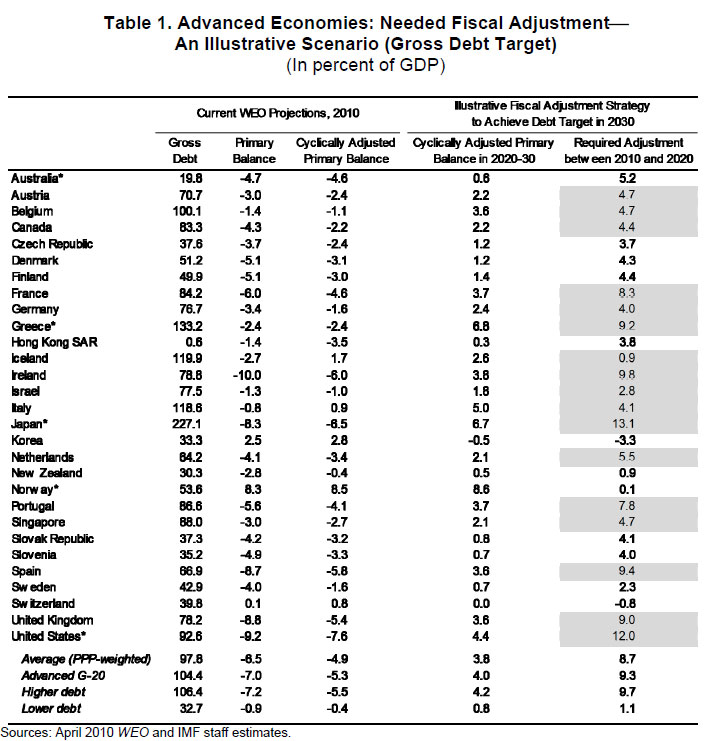“… under the Obama administration’s current fiscal plans, the national debt in the US (on a gross basis) will climb to above 100pc of GDP by 2015 – a far steeper increase than almost any other country.”
Obama is a perfect puppet President for the elite criminals, that want to destroy the dollar, bankrupt America and turn the US into a Third World country.
See also:
– US posts 19th straight monthly budget deficit; April deficit nearly four times higher than in 2009
Earlier this week, the Bank of England Governor, Mervyn King, irked US authorities by pointing out that even the world’s economic superpower has a major fiscal problem -“even the United States, the world’s largest economy, has a very large fiscal deficit” were his words. They were rather vague, but by happy coincidence the International Monetary Fund has chosen to flesh out the issue today. Unfortunately this is a rather long post with a few chunky tables, but it is worth spending a bit of time with – the IMF analysis is fascinating.
Its cross-country Fiscal Monitor is not easy reading and is a VERY big pdf (17mb), so I’ve collected a few of the key points. The idea behind the document is to set out how much different countries around the world need to cut their deficits by in the next few years, and the bottom line is it’s going to be big and hard (ie 8.7pc of GDP in deficit cuts around the world, which works out at, gulp, about $4 trillion).
But the really interesting stuff is the detail, and what leaps out again and again is how much of a hill the US has to climb. Exhibit a is the fact that under the Obama administration’s current fiscal plans, the national debt in the US (on a gross basis) will climb to above 100pc of GDP by 2015 – a far steeper increase than almost any other country.

US gross debt as a percentage of GDP
Compare it with the UK, which is often pinpointed as a Greece in the making. As you can see, gross debt increases sharply, but not by anything like the same degree.

UK gross debt as a percentage of GDP
Another issue is that, according to the IMF, the cost of extra healthcare and pensions will increase by a further 5.8pc over the next 20 years. This is the biggest increase of any other country in the G20 apart from Russia, and comes despite America having far more favourable demographics. It is significantly more than the UK’s 4.2pc.
But level of debt isn’t the only problem. Then there’s the fact that the US has a far shorter maturity of government debt than most other countries, meaning that even if it weren’t borrowing any extra cash it would have to issue a large chunk of new stuff each year as things are. The killer table to show you that is this one, which shows a country’s “gross financing needs” – in other words how much debt it has to issue in the coming years to keep itself functioning.
Click to enlarge
Britain, as you can see from the second column on the left, has one of the biggest deficits in the world. However, because it also has the longest maturity of average debt in the world (far right column), and so doesn’t have to issue as much new debt each year just to keep rolling that stuff over, its gross financing needs are – at 32.2pc of GDP, way bigger than Britain’s, at 20pc. Come to think of it, it’s actually worse than Greece on this measure.
What does this mean? Basically with a large financing need, you are particularly vulnerable if the market suddenly decides it doesn’t want your debt, since those extra interest rates they charge you mount much more quickly. Japan, by the way, is the one with a real problem on this front. It could hardly be any more vulnerable to a sudden drop in investor demand, and many over there fear that the moment domestic savers stop buying JGBs, the country is doomed to Greek-style collapse (though it doesn’t share Greece’s current account deficit and, crucially, has its own currency, so I don’t know about that).
On the flip side, unlike Japan or Britain, the US does not have a central bank with quite such a large stock of government debt. Both the Bank of England and Bank of Japan have done so much quantitative easing (buying bonds with printed money) over the past few years that they have the power to cause a fiscal shock if they decided they wanted to sell off their bonds at once. This table shows you that America, while not entirely guiltless on this front, has less of a shadow hanging over it.
Click to enlarge
But all of the above is what explains why the US, according to the IMF’s projections, has more to do than any other country in the developed world (apart from Japan) when it comes to bringing its debt back towards sustainable levels. Here’s the killer table. The column to look at is on the far right: note how the US needs a 12pc of GDP chunk chopped out of its structural deficit (ie adjusted for the economic cycle). That’s $1.7 trillion. Wow – that’s not far off Britain’s total annual economic output.
Click to enlarge
So does all of this mean the US is Greece? The answer, you might be surprised to hear, is no. Now, it is true that the US has some similar issues to Greece – the high debt, the need to roll over quite a lot of debt each year, the rising healthcare costs and so on. But it has two secret (or not so secret) weapons. The first is that unlike Greece it is not trapped in a monetary union. The US, like Britain and Japan, can independently control its monetary policy; it can devalue its currency. These are hardly solutions in and of themselves, but they do help make the adjustment a lot easier and more gradual. Second, the US has growth. It remains one of, if not the, world’s most dynamic economies. It is growing at a snappy pace this year (in comparison to other countries). And a few percentage points of GDP make an immense difference, since they make those debts much easier to repay.
Finally, some might be tempted at this point to cite the fact that the US has the world’s reserve currency in the dollar as another bonus. I am less sure. There is no doubt that this has made the US a safe haven destination (people buy US bonds when freaked out about more or less anything), and has meant that America has been able to keep borrowing at low levels throughout the crisis. However, the flip side of this is that because it has yet to feel the market strain, the US also has yet to face up properly to the public finance disaster that could befall it if it does not do anything about the problem. America is not Greece, but if it does not start making efforts to cut the deficit within a few years, it will head in that direction. The upshot wouldn’t be an IMF bail-out, but a collapse in the dollar and possible hyperinflation in the US, but it would be horrific all the same. America has time, but not forever.
By Edmund Conway Business
Last updated: May 14th, 2010
Source: The Telegraph



